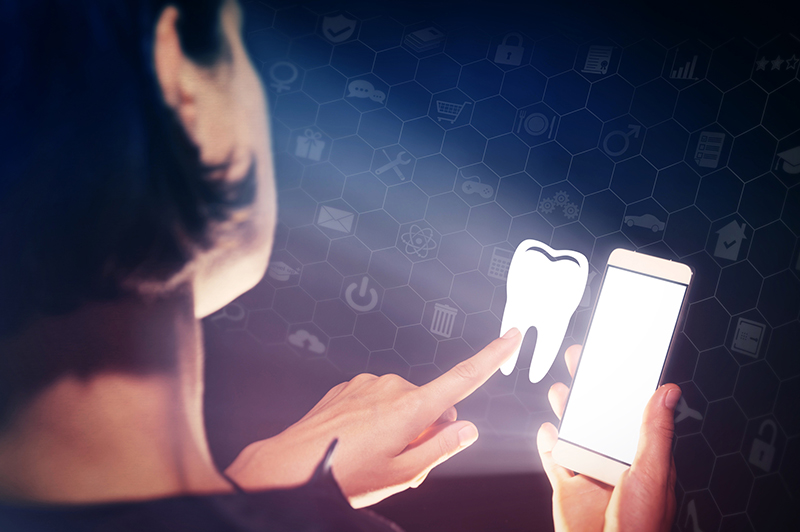
Evidence increasingly indicates that oral health is an essential part of overall health. For example, there is a link between periodontal disease and chronic diseases such as diabetes and heart disease. Due to the mostly asymptomatic nature, some oral diseases like dental caries, periodontal disease, precancers, and early cancers may go unnoticed in the initial stages. Therefore, routine oral examinations are crucial for early diagnosis and intervention of oral diseases.1
Unfortunately, the COVID-19 pandemic caused by the novel coronavirus posed challenges for obtaining routine oral examinations and disproportionately affected at-risk groups. Since March 11, 2020, when the World Health Organization (WHO) declared COVID-19 a pandemic,2 multiple reports have shown that racial or ethnic minorities and low-income families are at higher risk of developing COVID-19, and research has shown that the same group of people are also at risk for developing chronic oral diseases.3 Furthermore, the American Dental Association (ADA) on March 16, 2020, recommended that dentists nationwide postpone elective procedures to decrease the COVID-19 transmission risk in a dental setting.4 However, this policy has threatened to increase disparities in the vulnerable populations’ access to oral health care.3
Teledentistry emerged as a viable option for providing oral health care during the COVID-19 pandemic.3 In April 2020, the ADA requested the Federal Communications Commission to extend the agency’s COVID-19 Telehealth Program to include dental practices.5 The ADA provided interim guidance on billing and coding on April 14, 2020, to enable the use of teledentistry visits during the pandemic.6 Teledentistry allowed improved access to oral health care and decreased in-person visits to healthy or uninfected patients, thus reducing unnecessary exposure.7
Additional benefits of teledentistry include the following:
- Enables delivery of oral health services without time and space limitations3
- Helps provide care to patients living in dental health professional shortage areas, long-term health care facilities, rural communities, and prisons7
- Reduces health care disparities by improving access to dental providers and specialists8
- Aids in cutting health care costs by allowing a timely diagnosis and provision of care8
- Facilitates delivery of care by mid-level providers8
- Improves quality of care by expanding patient access to dental providers and providing preventive care and early diagnosis of oral diseases to patients who may be reluctant or unable to seek care otherwise8
- Supports oral health education on tobacco and alcohol use, healthy diet, benefits of topical fluoride, etc.3
In light of these benefits, dental practices should routinely incorporate teledentistry in a post-pandemic world. It would aid in improving access to preventive services and also facilitate oral health education. Teledentistry is useful for triage, diagnosis, consultations, monitoring, and follow-up care after emergency visits.7,9 Teledentistry interactions could be asynchronous (store and forward) or synchronous (real-time),8,10 and a cloud-based platform securely stores the data, photos, or videos collected from the patient.7,11
There are, however, many barriers to teledentistry. Some potential barriers include the following:
- Challenges with technology like poor internet access and lack of technical support7,8
- Limitations in providing a comprehensive evaluation (e.g., inability to do tests like palpation of an oral lesion)7,8
- Dental providers’ fear of making an inaccurate diagnosis7
- Lack of training of dental professionals in teledentistry7,8
- Insufficient or no reimbursement for services provided7,8
- Inadequate guidelines on licensure and credentialing of dental professionals for the practice of teledentistry7,8
- Increase in costs or lack of coverage with liability insurance8
- Security in storing the records and limiting access8
- The need for more research on the efficacy of teledentistry8
- Government and organizational regulations7,8
As we look forward to a post-pandemic era, teledentistry has a role to play in delivering oral health services since it could increase access to care, decrease costs and improve health outcomes. To make teledentistry a long-term viable option, the legislators, regulatory agencies, and third-party stakeholders must support permanent changes to the current temporary policies and help address some of the existing barriers to teledentistry.3,8
Author bio:

Anupama Grandhi, BDS, DDS
Dr. Anupama Grandhi is an Associate Professor in the Department of Oral & Maxillofacial Surgery at the School of Dentistry and Assistant Professor in the Department of Pathology & Human Anatomy at the School of Medicine. She is a Diplomate of the American Board of Oral and Maxillofacial Pathology and a Fellow of the American Academy of Oral and Maxillofacial Pathology. Her research interests include oral cancer and wellbeing.
References;
- Coulthard P, Thomson P, Dave M. et al. The COVID-19 Pandemic and Dentistry: The Clinical, Legal and Economic Consequences - Part 2: Consequences of Withholding Dental Care. Br Dent J. 2020; 229: 801–805.
- https://www.who.int/emergencies/diseases/novel-coronavirus-2019/interactive-timeline
- Brian Z, Weintraub JA. Oral Health and COVID-19: Increasing the Need for Prevention and Access. Prev Chronic Dis. 2020; 17:200266.
- https://www.ada.org/en/publications/ada-news/2020-archive/march/ada-recommending-dentists-postpone-elective-procedures
- https://www.ada.org/en/publications/ada-news/2020-archive/april/ada-asks-fcc-to-include-dentists-in-covid-19-telehealth-program
- https://success.ada.org/~/media/CPS/Files/COVID/ADA_COVID_Coding_and_Billing_Guidance.pdf
- Ghai S. Teledentistry During COVID-19 Pandemic. Diabetes Metab Syndr. 2020; 14(5): 933-935.
- Daniel SJ, Kumar S. Teledentistry: A Key Component in Access to Care. J Evid Based Dent Pract. 2014; Jun 14; Suppl: 201-8.
- Telles-Araujo GT, Caminha RDG, Kallás MS, Santos PSDS. Teledentistry Support in COVID-19 Oral Care. 2020; 75: e2030.
- Wakhloo T, Reddy GS, Chug A, Dhar M. Relevance of Teledentistry During the COVID-19 Pandemic. J Family Med Prim Care. 2020; 9(8): 4494-4495.
- Menhadji P, Oberai K. Teledentistry safeguards. Br Dent J. 2020; 229(10): 635-636.
